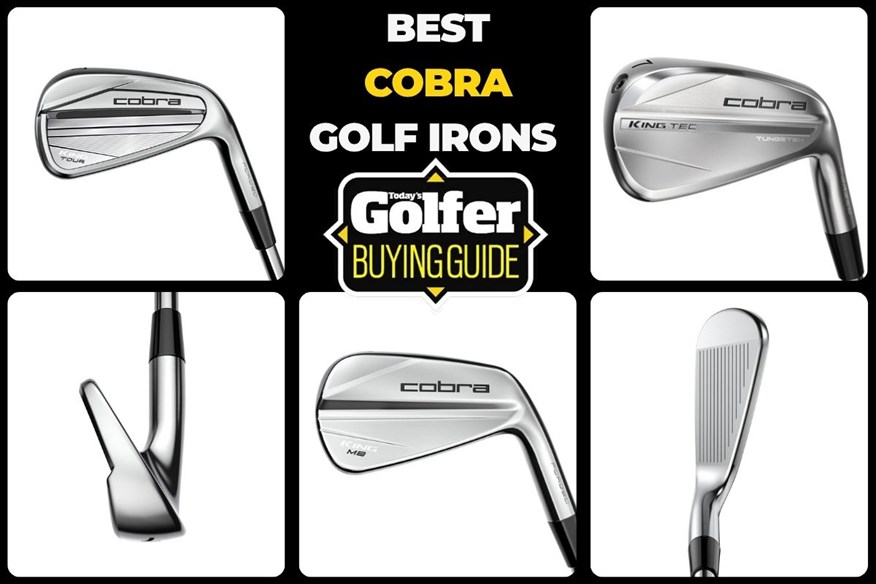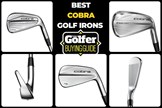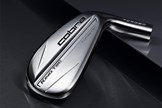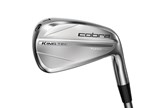Best Cobra Irons 2025: Data-led expert testing
Last updated:
Cick here to find out how we tested the best Cobra Irons
Cobra Golf have seen their stock rise in recent years, certainly with their irons. The company offers their clubs for every level of golfer, from the weekend warrior to the elite-level pro. These are the best Cobra irons in 2025
Considering the names that choose to play their brand, Cobra still receives an unfair amount of reticence from amateur golfers when it comes to their iron line-up. When you’re trusted by the likes of Max Homa and Rickie Fowler as staff ambassadors, and even non-staff players like Justin Rose, the best Cobra irons surely have to be considered among the best irons in the game.
Best Cobra Irons – Jump To:
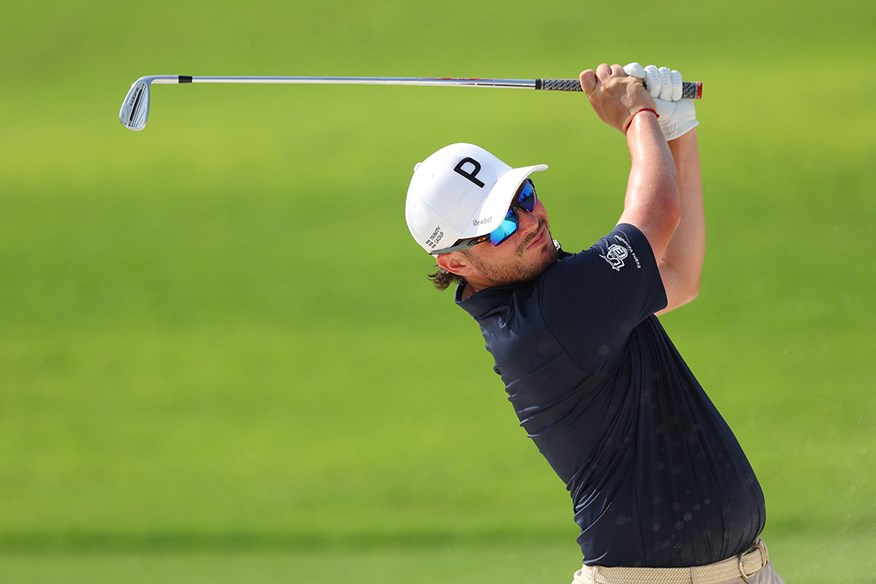
Historically, Cobra Golf has been tied to oversize iron performance and the most forgiving irons in the game, especially for golfers who’ve been playing since the 90s. The King Cobra iron series was one of the best-selling sets of clubs to ever feature in the game, a design that sat seamlessly alongside their ‘Baffler’ utility clubs.
In more recent years, however, Cobra has moved into a stronger position with the more advanced players’ market, like in the best blade irons, seeing impressive success within the woods category, and while there’s still a little way to go before the majority see the irons in the same way, those in the know are aware of the sleeping giant waiting to rear its head.
With impressive feedback in their MB/CB bladed options, shockingly high levels of power and forgiveness in their game improvement clubs, and unparalleled innovation with their limited release 3D-printed irons.
These are the best irons on offer from Cobra in 2025.
Best Cobra Irons
Impressive feedback from a tour-level iron


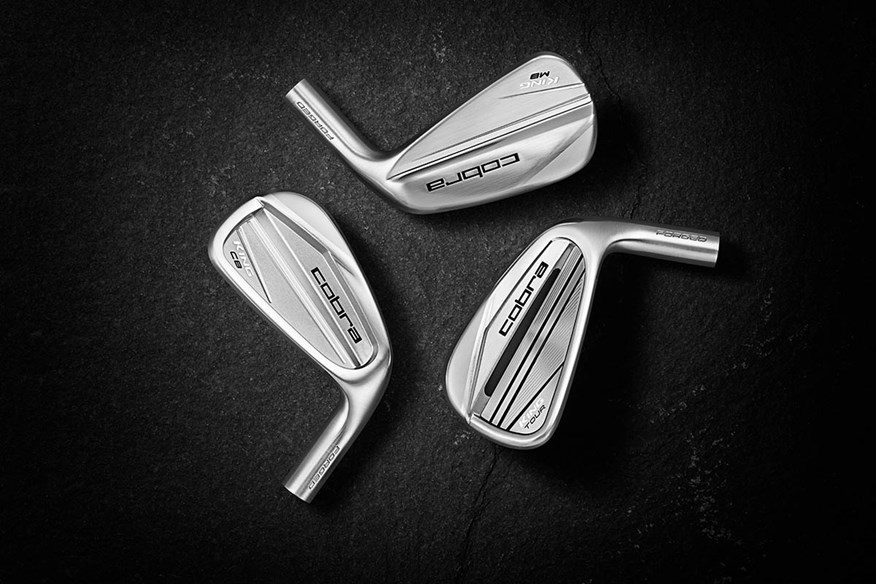
We love the King MB performance at Today’s Golfer. The design is a great blend of classic blade and modern aesthetic, with sharp edges around the entire head, with logos being obvious for branding without being obtrusive.
We always expect consistency from the performance of musclebacks (why else would you punish yourself with these models otherwise?), but the Cobra King MB has been particularly solid in how tightly its attributes have grouped together.
What our tester says:
The biggest thing shouting out to me with the King MB is how well it looks like it could be blended with the King Tour. I don’t know how I feel about playing with a bladed 4-iron, but a combination of the two feels like a deadly pairing.
Data:
Loft 34º | Clubhead Speed 91.3 MPH | Ball Speed 118.5 MPH | Carry 167.9 Yards | Spin 6,031 RPM | Launch 18.2º | Height 32.5 Yards | Descent Angle 47.8º | L-R Dispersion 2.4 Yards
| Set Options | 3-PW, GW |
| Stock Shaft | KBS $-Taper |
| Stock Grip | Lamkin Crossline |
| Left Handed | Yes |
Surprisingly forgiving, precision irons
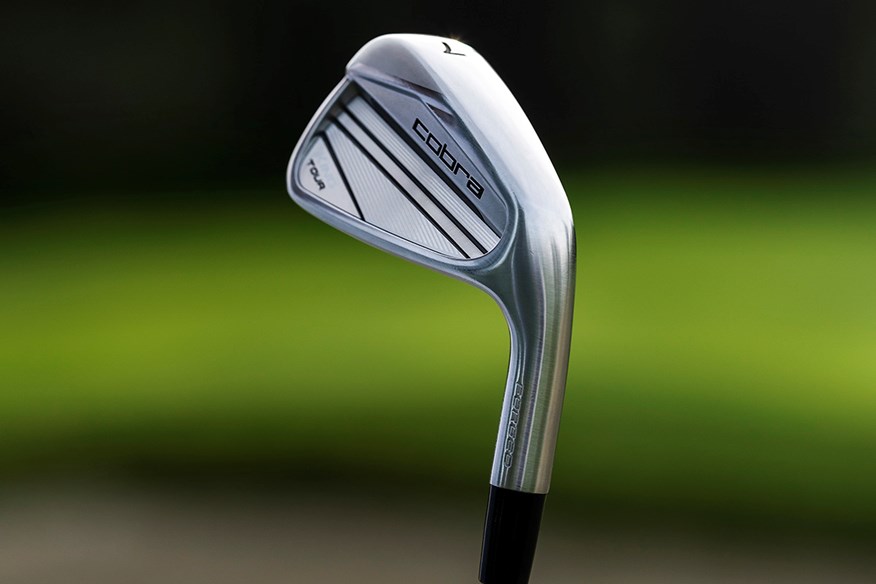

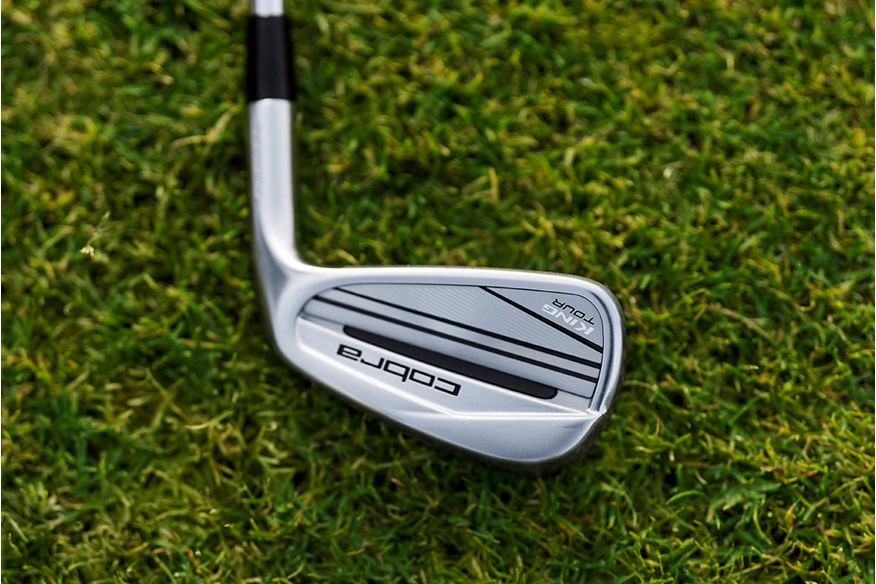
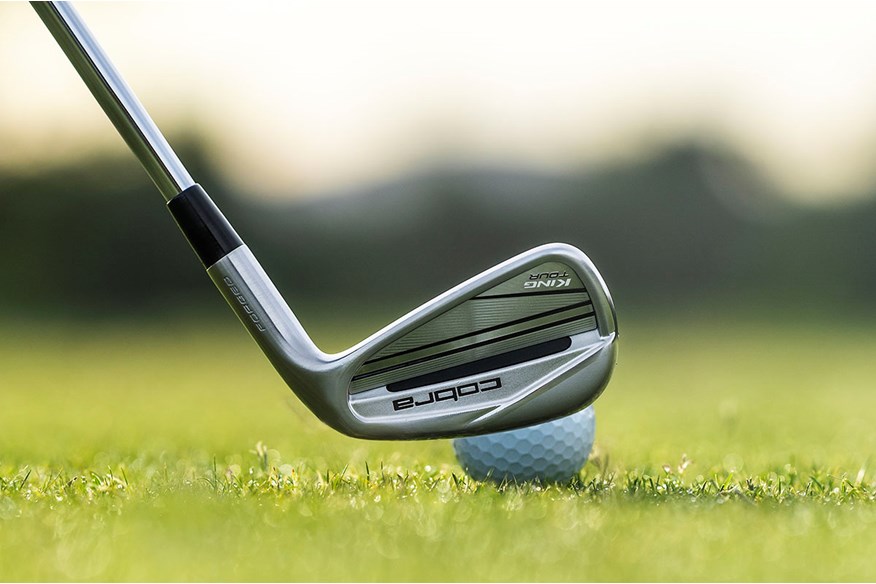
Another extremely impressive iron from Cobra – the company are certainly on a roll in 2025! The King Tour narrowly missed out on the very top spot in the Players Cavity category, offering strong distance while also maintaining good height and descent angles for control into the greens.
With several tour pros having gamed a set throughout the last 18 months, including non-staffer Justin Rose, there’s a real sense that Cobra are not just ready but chomping at the bit for a chance to take on some of the bigger, established names in every iron category.
The shaping of the Cobra King Tour lends itself to the category it’s in, with minimal offset, straight edges where you want them but curves where they’re needed, with a more rounded sole camber that negotiates well with any turf condition.
What our tester says:
Just like the Forged Tec, there's really clean styling to the Tour iron. It catches my eye nicely, with some great straight lines on the leading edge and topline, but nothing that intimidates me.
Data:
Loft 32º | Clubhead Speed 92 MPH | Ball Speed 122.1 MPH | Carry 175.1 Yards | Spin 5,759 RPM | Launch 17.8º | Height 33.8 Yards | Descent Angle 47.9º | L-R Dispersion 7.8 Yards
| Set Options | 3-PW, GW |
| Stock Shaft | KBS $-Taper |
| Stock Grip | Lamkin Crossline |
| Left Handed | Yes |
Blended performance, for control and forgiveness



The King Tec model is possibly the most average model in our Players Distance category, and that’s a good thing! The performance metrics are extremely tight to the average of the range of results we captured, making this a great iron for golfers who don’t want a set that over-performs in one particular area.
Cobra have been reiterating the design for several generations of the King Tec now, and it’s only been getting better. With the current generation, Cobra have created a design that offers super clean looks and a best-of-both-worlds performance that should give golfers a true alternative to the models offered by the big three names in equipment.
What our tester says:
I’m struggling to find something that I don’t like about this head! It’s got such a great look to it, and the flight seems as consistent as anything. The only thing I’m not 100% on is the feedback. The sound isn’t as soft as some of the other models we’ve tested.
Data:
Loft 29.5º | Clubhead Speed 93.3 MPH | Ball Speed 123.3 MPH | Carry 179.0 Yards | Spin 5,373 RPM | Launch 16.2º | Height 31.4 Yards | Descent Angle 46.1º | L-R Dispersion 8.4 Yards
| Set Options | 3-PW, GW |
| Stock Shaft | KBS $-Taper Lite |
| Stock Grip | Lamkin Crossline |
| Left Handed | Yes |
Massive distance, with a new, refined look
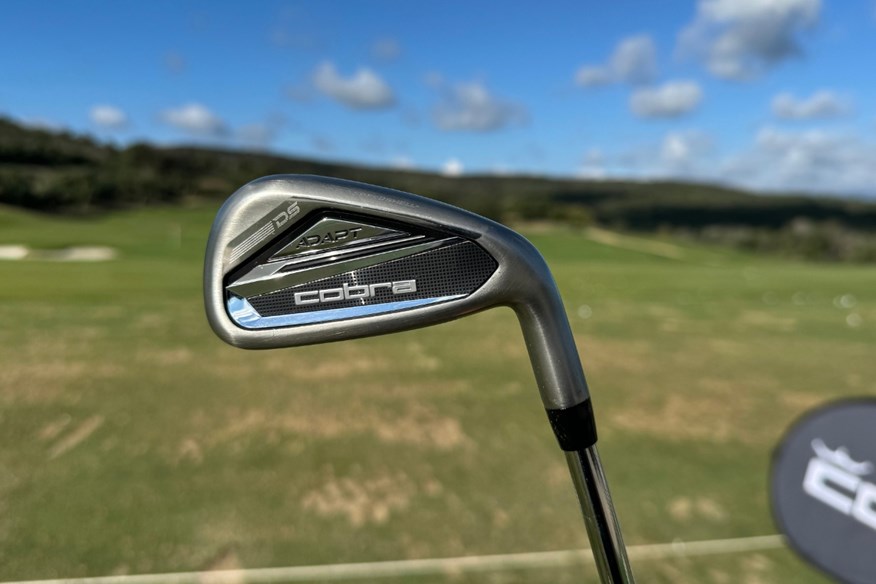


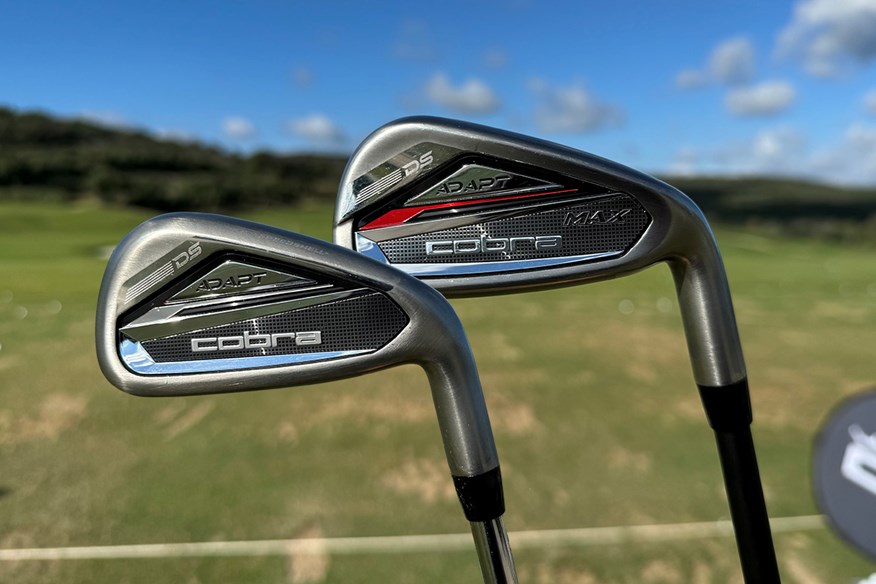
Cobra’s DS-Adapt iron is hot. Like really hot. While it does have the lowest loft of any of our Game Improver irons, when you’re seven yards longer than the next nearest model, we have to look at your performance and technology in some further detail.
While there’s lower launch (third lowest in the category, to be precise), the DS-Adapt actually sits within 100 rpm of the average spin rate, and slightly higher than average peak height and descent angle means this iron is actually playable to match its distance.
We’ll still recommend it for golfers with some more speed or ones generating a little more spin through their own swing, at least. It’s a serious contender in the GI irons list.
What our tester says:
The gunmetal-style finish looks pretty different from anything else I’ve seen on the market. I’m not sure if it suits me, but I definitely prefer it over a completely black head. I do know it feels ridiculously fast, though. I could almost use this 7-iron off the tee at my speed.
Data:
Loft 27º | Clubhead Speed 94.2 MPH | Ball Speed 129.5 MPH | Carry 194.3 Yards | Spin 4,667 RPM | Launch 15.6º | Height 33.5Yards | Descent Angle 46.2º | L-R Dispersion 4.0 Yards
| Set Options | 4-PW, GW, SW |
| Stock Shaft | KBS Tour Lite (Steel) / KBS PGI (Graphite) |
| Stock Grip | Lamkin Crossline |
| Left Handed | Yes |
Best Cobra Irons: The Data
| Model | Loft (º) | Club Head Speed (mph) | Ball Speed (mph) | Carry Distance (yds) | Spin Rate (rpm) | Launch Angle (º) | Peak Height (yds) | Descent Angle (º) | L-R Dispersion (yds) |
| King MB | 34 | 91.3 | 118.5 | 167.9 | 6,031 | 18.2 | 32.5 | 47.8 | 2.4 |
| King Tour | 32 | 92.0 | 122.1 | 175.1 | 5,759 | 17.8 | 33.8 | 47.9 | 7.8 |
| King Tec | 29.5 | 93.3 | 123.3 | 179.0 | 5,373 | 16.2 | 31.5 | 46.1 | 8.4 |
| DS-Adapt | 27 | 94.2 | 129.5 | 194.3 | 4,667 | 15.6 | 33.5 | 46.2 | 4.0 |
Best Cobra Irons: Buying Guide
Type of Construction
Golf iron construction typically falls into two categories: one-piece and multi-material.
One-piece means exactly what it says: the irons are built from a single piece of metal squeezed and cut into shape. This kind of iron is made from a softer metal that goes through a forging process where a giant hydraulic press hammers super-hot steel into a tooling, or Mold, to create the shape of a club.
You’ll hear the word ‘Forged’ a lot with some irons, but it just refers to models that have been created, or partially created, using this method; it doesn’t necessarily reflect the quality of the iron, although softer metals (commonly 1020/1025 carbon steel) are used to make the process easier.
The second kind of construction is called multi-material. Irons made using this method can be made from forged or cast metal (cast metal is liquified and poured into a Mold instead of being compressed into shape), as well as, increasingly so these days, unique non-metal elements.
Handicap / Skill
We don’t like using handicap as a gauge for which irons you use, but your consistency as a ball striker should be a big factor in the irons you’d select. Typically, skill and strokes-received come as a pair, but it isn’t always the case.
There are good iron players with 14-handicaps (who might not be strong with their driving, hence the higher handicap), and there are inconsistent iron strikers playing off a five or six-handicap who make up for it with excellent short games.
If you want an easy way to figure out the quality of your ball striking, put some footspray (or similar) onto your 6-iron and hit 10 shots.
Are the marks so consistent that it looks like you’ve only hit one ball? You’re in less need of irons with forgiveness.
Are the marks across the face? Look at an iron model that will give you more help.
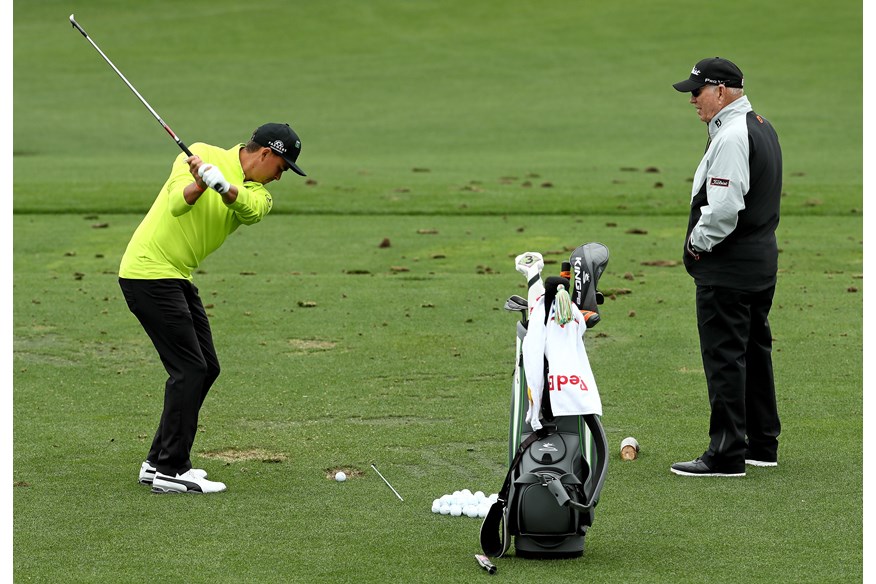
Custom Fitting
Custom-fitted golf clubs are still considered by many to be a privilege, but we’d say it’s now an essential. With so many manufacturers making great quality products now, the small differences are going to be the determining factor in what suits you best.
A good club fitter will be able to talk you through the right loft, lie, shaft, bounce, sole width, offset, grip, and any other factor you can think of, to find the right setup for your game.
Budget
As with most things in the golf world, prices for irons can vary considerably. Value for money is subjective, and therefore, you should spend however much you feel comfortable with, be it a premium set or one with a more competitive price point.
You can also look through second-hand websites, but we’d encourage you to go for a fitting first before you start browsing, to give you a better idea of what you should be looking for. You can pay for a fitting only without the need to buy clubs, so you can make the correct choice for your game.
